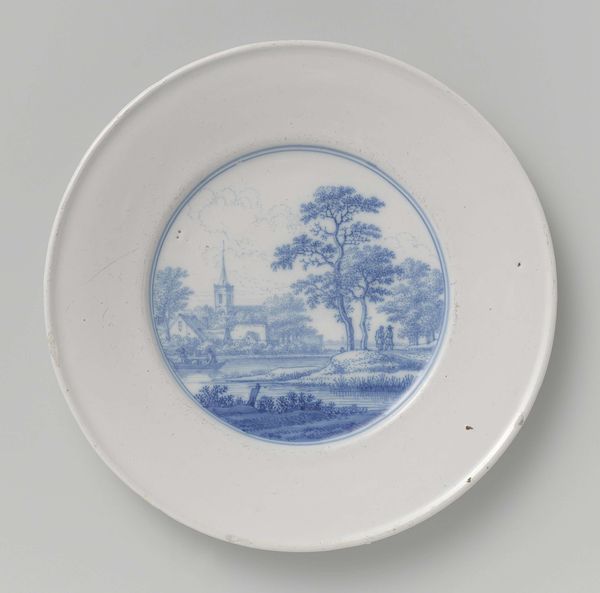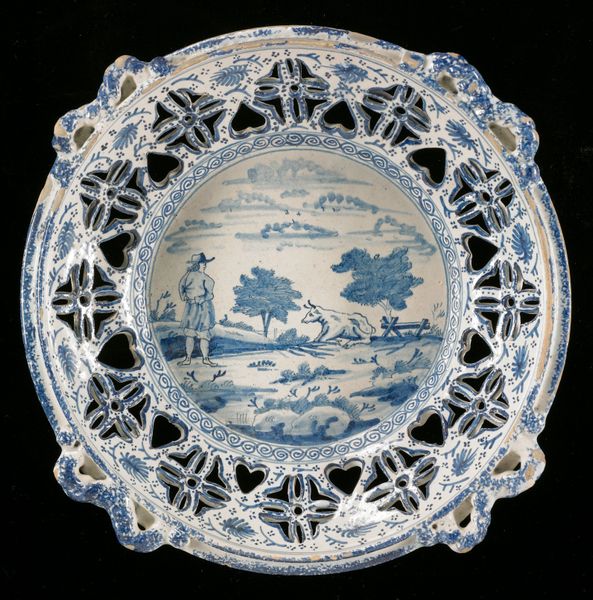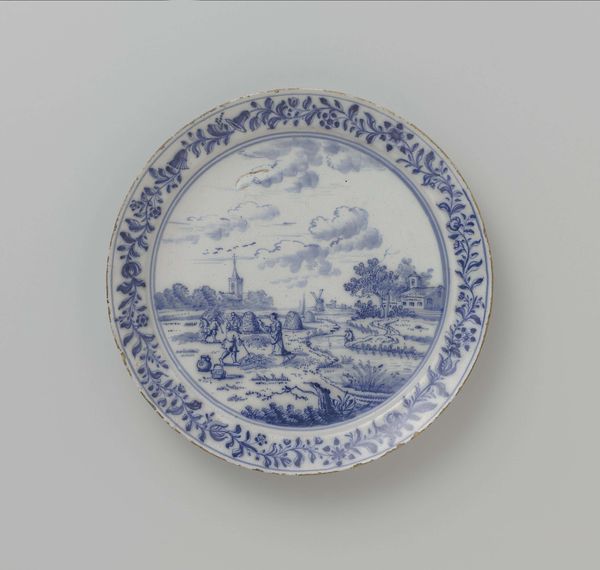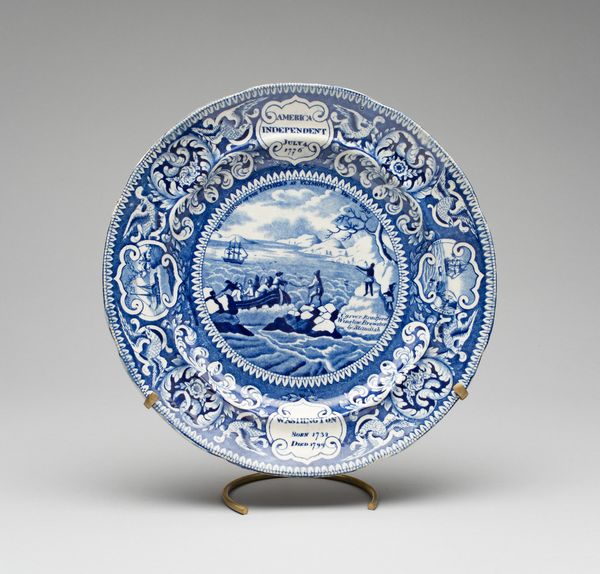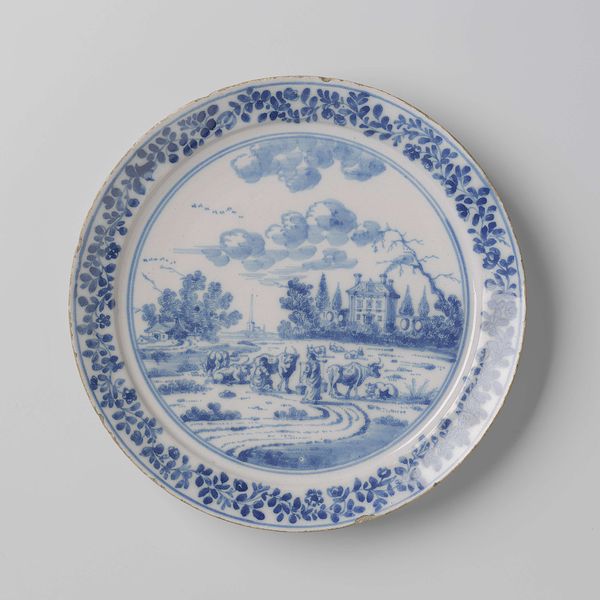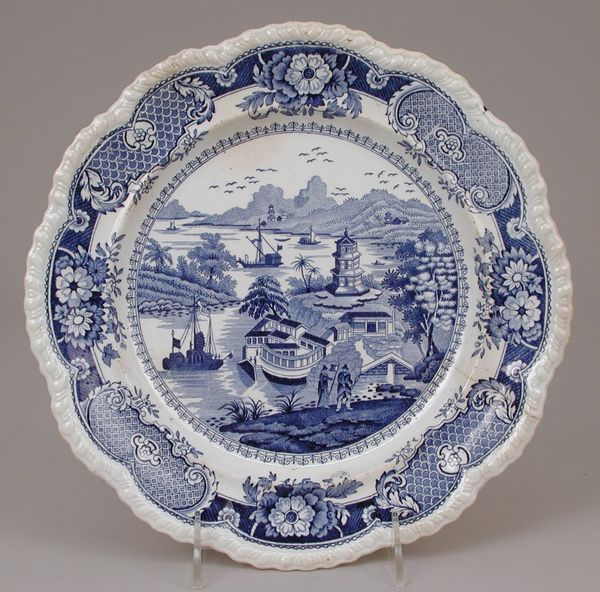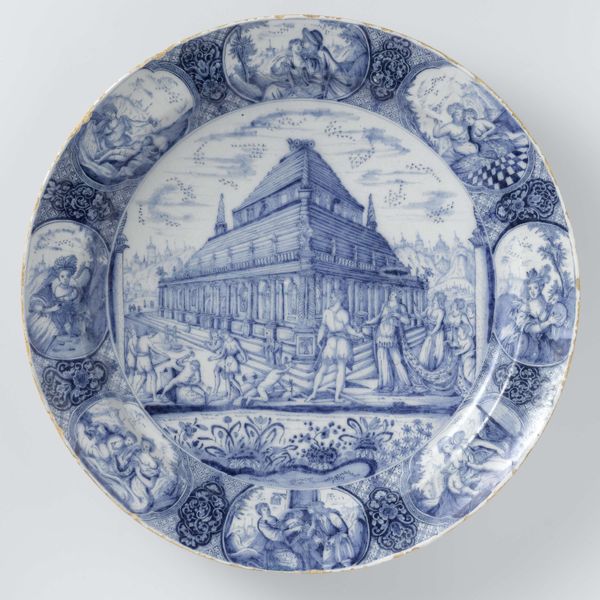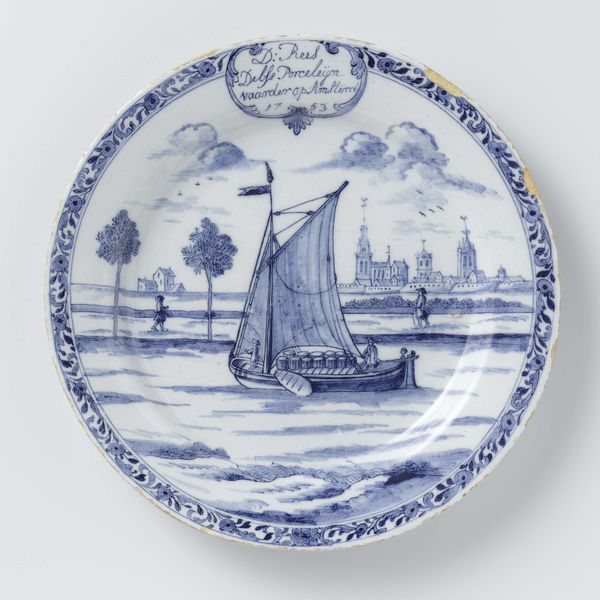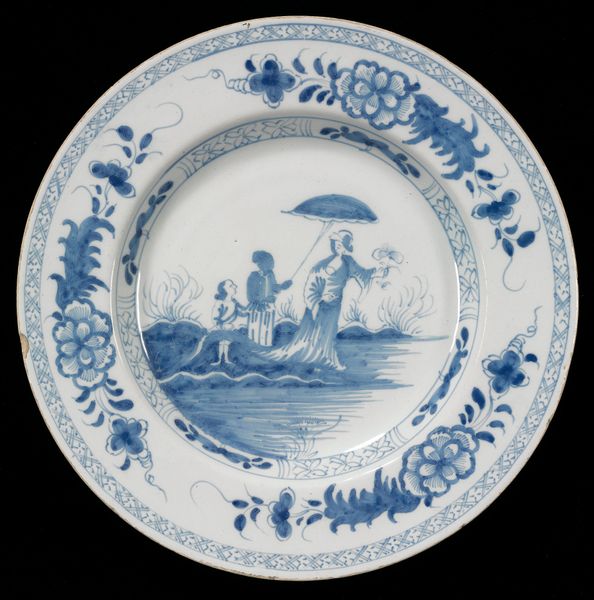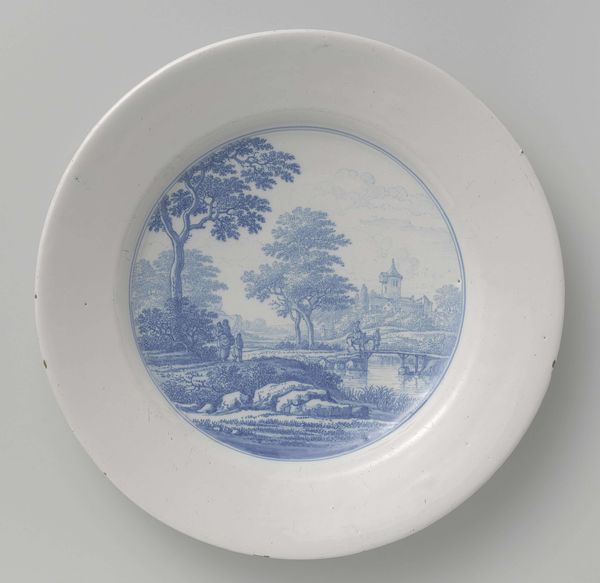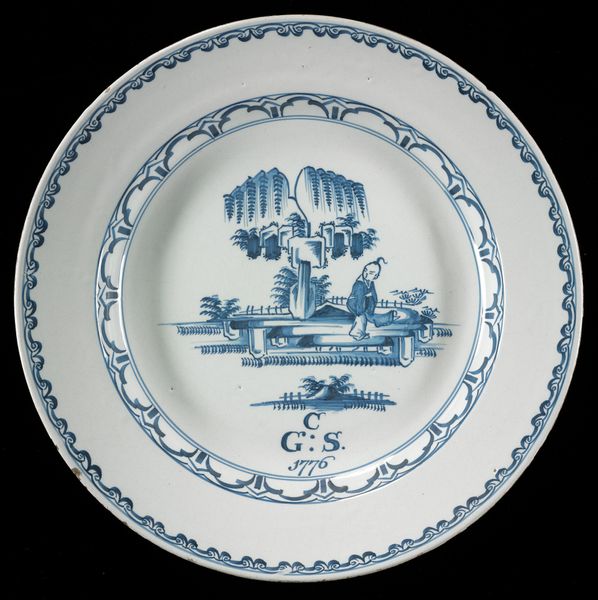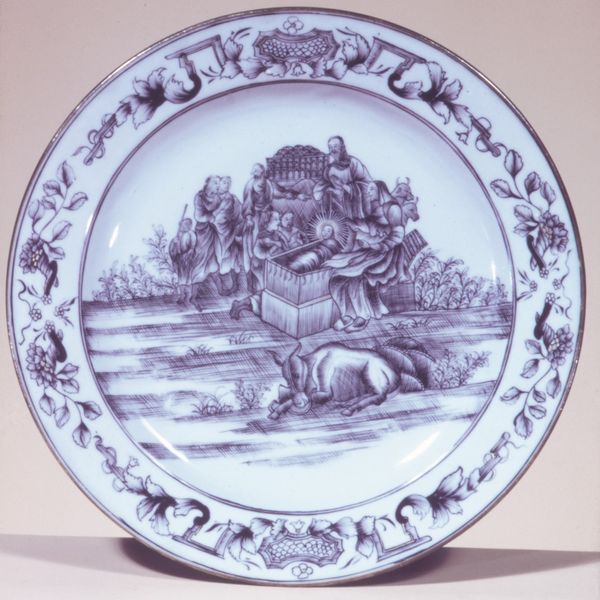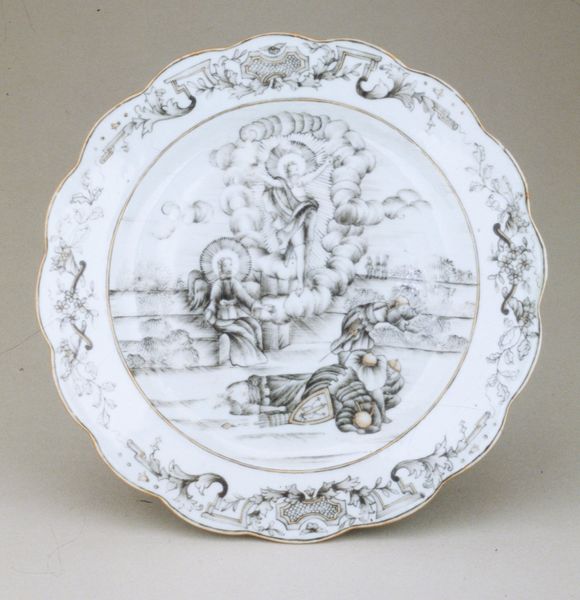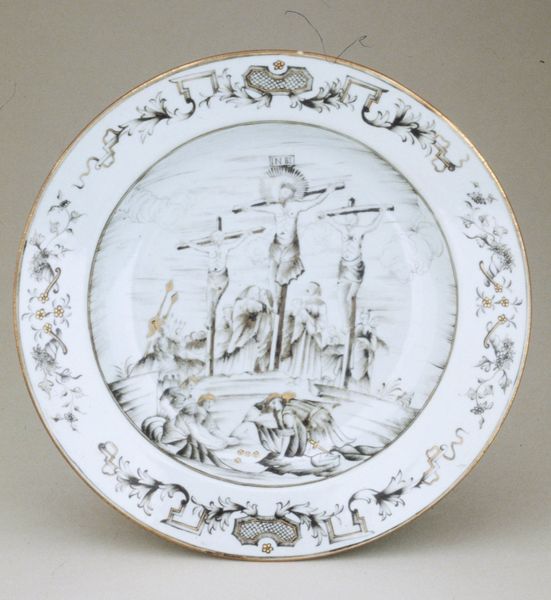
drawing, ceramic, earthenware
#
drawing
#
dutch-golden-age
#
landscape
#
ceramic
#
earthenware
#
stoneware
#
ceramic
#
line
#
genre-painting
Dimensions: diameter 39.5 cm, height 5.7 cm
Copyright: Rijks Museum: Open Domain
Curator: Here we have an earthenware dish, made around 1675. It depicts the Kruipin Inn and is currently held in the collection of the Rijksmuseum. Editor: Delftware, isn’t it? Instantly transports me to a Vermeer interior! Blue and white… but on a plate? Bit quirky, right? Curator: Its charm lies in this unexpected blend of function and artistry. Notice the fine lines; they describe figures in lively poses and suggest architectural details with remarkable efficiency. The cobalt-blue ornamentation on the rim frames a genre scene infused with textual elements. Editor: Absolutely, the artist is playing with the space in such an amazing way. Like, a day in the life captured on… dinnerware. I can almost hear the clinking glasses and feel the sun dappling on that quaint little inn. Very whimsical! I can smell it. Curator: And consider the semiotic weight: the figures clustered near the inn's entrance, the rider on horseback – each contributes to the scene's overall narrative. There's text included, which almost forms a circular complement with the figures that inhabit this intimate public space. It also gives credence to its commemoration through careful craft. Editor: That’s very true. I think also there is something uniquely funny about turning everyday life into, well, dinner itself! What happens after it leaves the artist studio? Does it end up on someone's table getting passed around? You can see the hand in it and what feels so tangible is that other people’s hands passed it too. I feel connected, suddenly. Curator: An apt description, in my estimation. The plate invites an analysis of how function intersects with symbolic representation in Dutch Golden Age art. How objects become narrators. Editor: Exactly! I get it. In the end, this piece reveals, perhaps surprisingly, an intriguing connection between domestic life, visual storytelling, and that oh-so-human desire to freeze a moment in time.
Comments
rijksmuseum about 2 years ago
⋮
This dish must have been made on commission, for the inscription mentions the Kruipin Inn near the Kamerikker Lock at Woerden and the Orangist owner and his clientele by name. Even the little dog, Mars, was not forgotten. The lock was a strategic location in the Old Dutch Waterline (flood defence line), where a fierce battle with the French was waged in 1672.
Join the conversation
Join millions of artists and users on Artera today and experience the ultimate creative platform.
